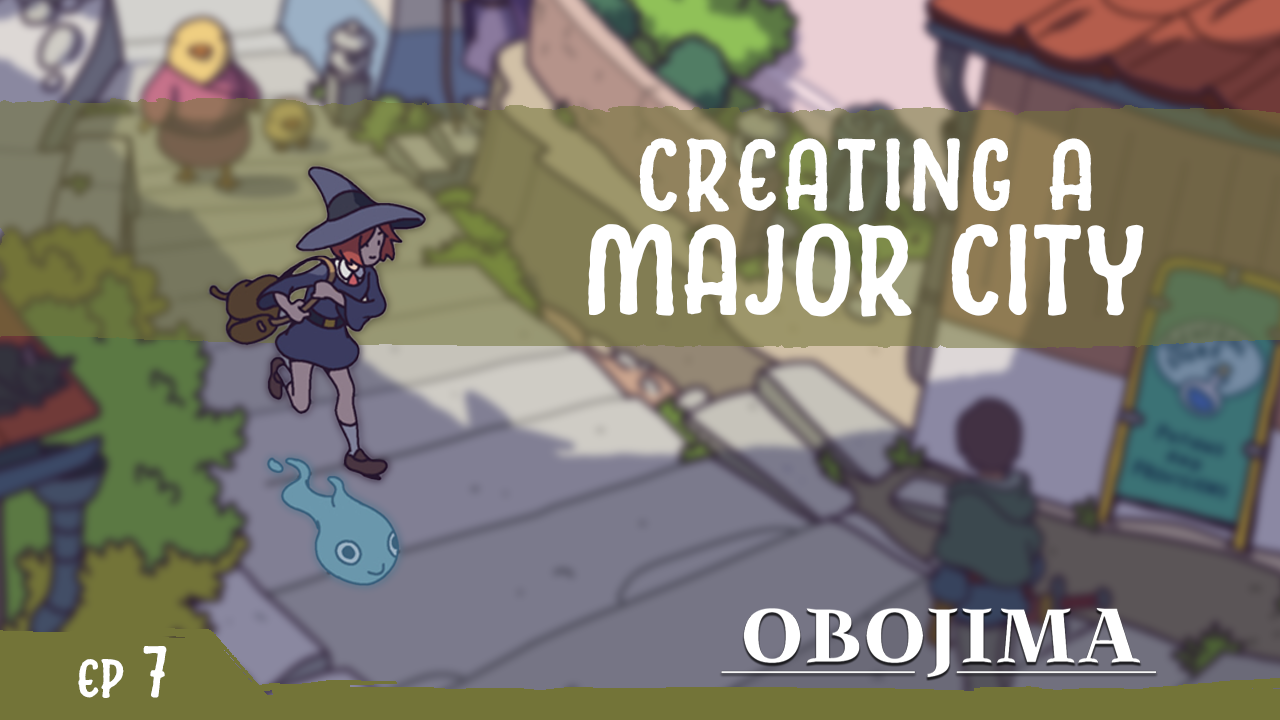
The Obojima Podcast the Blog | Episode 7 Developing a Major City in D&D: Yatamon the First Age City
This blog post was made using dictation summary software, and posted for SEO purposes. If you really want to know what this episode is about, check out the full episode here: https://youtu.be/GgssmK5tcDM?si=x57QRwsSizMvgVXm
It’s lucky episode number 7! Welcome to the blog of the Obojima Podcast! This podcast is a deep dive into the creative process of creating Obojima: Tales from the Tall Grass. First things first, let’s meet our intrepid crew of writers.
-
Jeremiah Crofton - The Creative Director of 1985 Games and the creator of Obojima.
-
Ari Levitch - Head Writer
-
Adam Lee - Head Writer
Building Obojima’s Largest City
The team expands the setting by focusing on Obojima’s largest city—an '80s-era relic magically preserved and retrofitted for modern magical life. It’s a place where First Age technology and current-era magic intertwine, creating a cityscape of vending machines powered by spirits, glowing signage, and towering ruins that hum with enchantment. Rural Obijimans view the city with awe, suspicion, or reverence, depending on their relationship with the past and with magic.
Spirit Gate and City as a Magical Hub
The city may house the first official, accessible gate to the Spirit Realm—sparking debate about what it looks like and how one accesses it. Possibilities range from hidden cracks in alleyways to enchanted fountains or even clay pots. Spirits come and go, sometimes as tourists, sometimes in more cryptic ways. Humans use enchanted items or potions, like spirit masks, to cross over. The city becomes a crossroads for commerce, education, and spiritual exchange, attracting witches, scholars, potion-sellers, and wandering adventurers.
Factions, Function, and Lack of Government
While the city lacks centralized leadership, it’s loosely governed by service-providing factions like the Courier Brigade, the Tall Hats (a prominent witch coven), sword schools, and the AHA (Archaeologists, Historians, and Archivists). These groups hold influence through tradition, respect, and necessity—not politics. Their services range from public protection to magical research and education. As refugees flee corruption from the east, the city’s population surges, creating tension and resource strain.
Corruption, Warnings, and Adventure Hooks
The AHA plays a key role in detecting and tracking corruption, often trying to convince other factions to act. Adventure hooks include efforts to unite the factions, mysterious disappearances, a traveling showman displaying signs of corruption, and a ranger corrupted by unknown forces. Tunnels beneath the city—magical, decaying, or long-abandoned—add depth and danger to urban exploration.
Lanterns, Trees, and the Island’s Will
Festivals serve as cultural flashpoints: in one, the Courier Brigade launches massive paper lanterns and sends enchanted dawn blossom trees across the island, which land wherever the island “wills” them. This sometimes clashes with local traditions or farming practices, sparking both reverence and resentment. The belief that Obojima is sentient remains a quiet but powerful undercurrent, guiding many cultural choices and worldviews.
Witch Hooks and Rare Brooms
Witch covens provide fertile ground for character stories. Hooks include helping a young witch retrieve a lost or pawned broom—rare and treasured objects in Obojima—and navigating the politics of coven membership. Some brooms may even predate current magical knowledge, holding secrets from earlier ages.
Courier Brigade’s Giant Lantern
The Courier Brigade owns a legendary hot air balloon-like lantern, powered by a candle made over a year. It’s a last-resort tool for major deliveries or rescues, casting light seen across vast distances. Smaller versions are used as symbols or beacons, with potential for puzzles or signaling systems in gameplay.
Spirits in the City: Mischief and Tradition
The city teems with spirits—some wise, others devious. One proposed NPC is a trickster spirit who changes shape but not voice, fooling newcomers but easily recognized by locals. Community groups, like a spiritual neighborhood watch, keep troublemaking spirits in check. Scratching the sleeping Elder Spirit—a massive, dozing entity that’s become a cultural landmark—is a local tradition believed to bring luck.
Happy Joy Cakes and Local Flavor
In a lighter turn, the team discusses Happy Joy Cakes, rare confections with mild magical effects tied to emotions and social bonding. Originally created by a baker NPC, these cakes may help resolve disputes or lift spirits. The fictional bakery could expand into a full brand—offering drinks, protein bars, even a magical subscription box—adding flavor and warmth to city life. The idea draws from real-world inspiration (a Bundt cake shop in Portland) and adds community-driven charm to the setting.
Closing Notes
The episode wraps with reflections on faction design, the city’s magical infrastructure, and cultural details that make Obojima’s urban heart feel lived-in, enchanted, and distinct. Plans for immediate follow-up episodes suggest further deep dives into city gameplay and spirit lore.
Check out the full episode here: https://youtu.be/GgssmK5tcDM?si=x57QRwsSizMvgVXm


